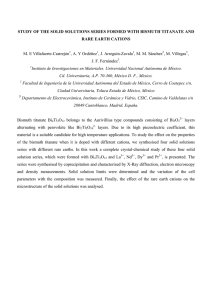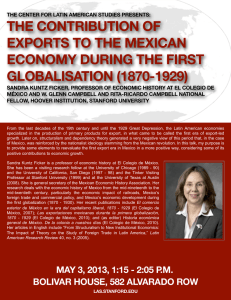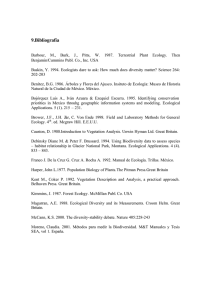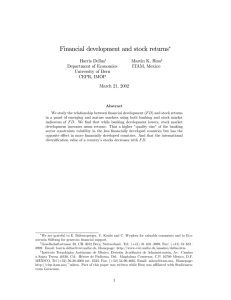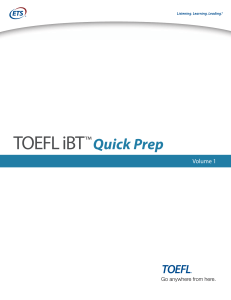Teotihuacán: Underworld Study
Anuncio
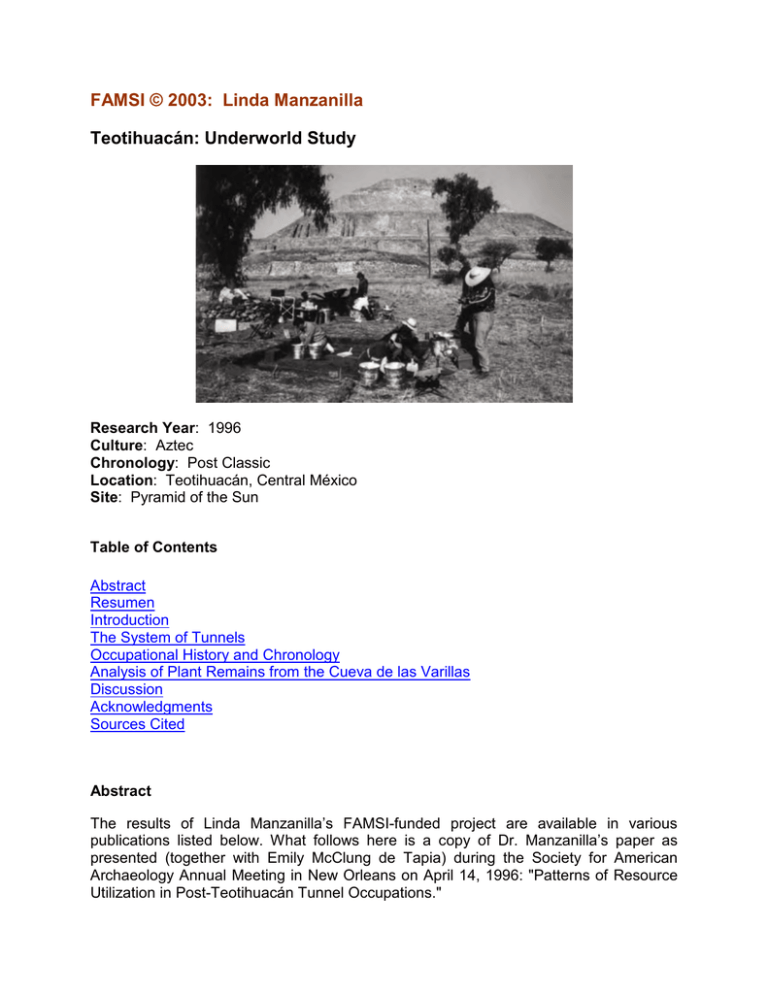
FAMSI © 2003: Linda Manzanilla Teotihuacán: Underworld Study Research Year: 1996 Culture: Aztec Chronology: Post Classic Location: Teotihuacán, Central México Site: Pyramid of the Sun Table of Contents Abstract Resumen Introduction The System of Tunnels Occupational History and Chronology Analysis of Plant Remains from the Cueva de las Varillas Discussion Acknowledgments Sources Cited Abstract The results of Linda Manzanilla’s FAMSI-funded project are available in various publications listed below. What follows here is a copy of Dr. Manzanilla’s paper as presented (together with Emily McClung de Tapia) during the Society for American Archaeology Annual Meeting in New Orleans on April 14, 1996: "Patterns of Resource Utilization in Post-Teotihuacán Tunnel Occupations." Resumen Los resultados del proyecto financiado por FAMSI de Linda Manzanilla están disponibles en varias publicaciones listadas abajo. Lo que sigue aquí es una copia del papel del Dr. Manzanilla como presentada (junto con la de Emily McClung de Tapia) durante la Reunión Anual de la Sociedad de Arqueología Americana en New Orleans en abril 14, 1996: "Patterns of Resource Utilization in Post-Teotihuacán Tunnel Occupations." Submitted 05/01/1996 by: Linda Manzanilla Patterns of Resource Utilization in Post-Teotihuacán Tunnel Occupations Introduction This paper will review some of the results of extensive excavations in one extraction tunnel to the east of the Pyramid of the Sun at Teotihuacán. This ongoing project began in 1987 in the northern half of the Teotihuacán Valley to identify geologically, trace geophysically, and excavate archaeologically some of the underground holes near major structures at Teotihuacán (Manzanilla et al., 1989; Barba et al., 1990; Arzate et al., 1990; Manzanilla et al., 1994; Manzanilla 1994, 1994b; Chávez et al., 1988; Chávez et al., 1994; Manzanilla et al., 1996.) The tunnels were used as extraction sites, ritual and burial places, as well as dwellings, for Teotihuacán and post-Teotihuacán occupations. See plan of this area (Figure 1). 2 Figure 1. Teotihuacán diagram showing caves and cave entrances. The System of Tunnels The existence of underground holes in Teotihuacán is a well-known fact. Heyden (1981) reproduces the glyph of Teotihuacán from the Xólotl Codex in Dibble’s work, which represents the two large pyramids overlying a cave with a person inside. It is likely that this figure refers to the oracles that were frequently located within caves, as indicated in the Relación de Teotihuacán (Soruco 1985: 107). In addition, toponyms such as Oztoyahualco and Oztotícpac make reference to caves. Former archaeological research in tunnels includes Linné’s (1934) excavations at San Francisco Mazapa; De Terra and Bastien’s (Armillas 1950) exploration of the Calaveras Pit, where 35 human skulls were found; Carmen Cook de Leonard (1952: 49; Millon 1957: 12) at Oztoyahualco; Michael and Elizabeth Goodliffe’s (1963) excavations in four interconnected tunnels in Purificación, with Teotihuacán, Mazapan and Aztec II and III ceramics; Obermeyer’s (1963) excavation of the Huexóctoc Cave in Oxtotícpac; Heyden’s (1973; Heyden 1975; Baker III et al., 1974) study of the tunnel below the Pyramid of the Sun, excavated by Acosta and used during Teotihuacán II times (first to third centuries A.D.) for ritual purposes; Basante’s explorations (1982, 1986) in several tunnels and holes in the valley; and finally Soruco’s exploration (1985, 1991) of a cavity probably for solar observations, located to the southeast of the Pyramid of the Sun, 3 where a basalt stela on an altar displayed a ray of light in its center at the beginning of the summer solstice. In 1994, two other cavities were tested by INAH’s Proyecto Especial 92-94, one of which is a smaller replica of Soruco’s solar observatory (Moragas 1994). In August 1992, we began the extensive excavation of four tunnels to the east of the Pyramid of the Sun (Manzanilla 1994, 1994b; Manzanilla et al., 1994), to determine the activities present in the tunnels, absolute dating of the contexts, chemical, phytolith, pollen, botanical and faunal macrofossils, together with archaeological analyses. Radiocarbon and obsidian hydration dates have been obtained from primary contexts. We conclude that the system of tunnels in the Teotihuacán Valley was originally a group of quarries dated to the Patlachique or Tzacualli periods (around A.D. 80), for the extraction of porous volcanic scoria, and are, thus, man-made holes. We rectify, therefore, our previous idea, derived from Heyden (1975) and Millon (1973), that they were natural, because there is no natural phenomenon in volcanic contexts that can produce large or long holes, except lava tubes. And this is certainly not the case. In the original settlement of the valley consisting of three-temple plazas surrounded conspicuously by dwelling sites–and not a very dense urban site as Millon (1973) originally proposed–the quarry mouths were found very near these pyramid complexes, due to the fact that much construction material was needed for the elevation of the pyramids themselves. When the plazas of these complexes were built, they seemed to be deliberately disposed on top of the tunnels. We yet do not know whether or not there is a physical communication between these tunnels and the plazas. Occupational History and Chronology Four tunnels were excavated, all located to the east of the Pyramid of the Sun. Three of them (Cueva de la Basura, Cueva de las Varillas, and Cueva del Pirul) lie inside the protected archaeological zone. The fourth one (Cueva del Camino) is located near La Gruta Restaurant, under the road. In general, the four have the same general sequence: a series of modern and Postclassic occupational levels inside a grayish-brown loose stratum, around one meter deep, and with some evidence of flooded clayish material. This stratum overlies a cultural fill of yellowish-brown disintegrated tuff. On its surface we found either Late Coyotlatelco or Mazapa activity areas and funerary loci. Inside it there were broken painted Teotihuacán pottery, painted slate, and human bones (some of which were cut skulls). This fill was cultural because it was also present in tunnels with no tuff (tepetate) overlying the volcanic scoria (tezontle) where the tunnels were excavated. Originally it may have had Teotihuacán burials or ritual activity areas, probably looted by the Coyotlatelco occupants. 4 A third stratum (clearly seen in the Cueva de la Basura) was represented by a reddishbrown volcanic scoria fill with small basalt fragments, bone, mica, obsidian, ceramics and carbonized materials. Cueva de las Varillas The Cueva de las Varillas tunnel was 50 m. in length; it had a vast entrance chamber, 18 m. in diameter, with seven small niches, and a tunnel that crosses three small chambers. In its southern side it is connected to another chamber that had wellpreserved funerary and storage contexts, of which we will talk further on. Except for the funerary chamber (Chamber 2), the rest of the cavity contained modern, Colonial, Aztec, Mazapa, and Coyotlatelco domestic contexts, as well as disturbed Teotihuacán ritual materials. Many different activities are represented for the Epiclassic and Postclassic living floors (dated from A.D. 650 to 1500): spinning, sewing and weaving, painting and sealing, wood and bone working, perhaps hide preparation, food preparation and consumption, and domestic ritual. Figurines from Preclassic to Colonial times were found, as well as a basalt human head covered partially with stucco and the half face of an old man. Many of the vessels seem to be ritually killed. There are some hints of a cult that involved marine elements, such as different types of mother-of-pearl shells, a ray cauda, and fragments of marine turtle shells. We can also cite some examples of foreign pottery from the Gulf Coast and the Mayan area (particularly polychrome sherds). Underneath these occupation levels, there are 3 m. of disintegrated tuff, a material that naturally overlies, in a compact manner, the pyroclastic fill in which the cavities were excavated. This loose fill had some fragments of painted slate and cut human skulls with polished rims to allow drinking, resembling the ones De Terra and Bastien found in the Calaveras pit associated with Miccaotli ceramics (Armillas 1950). In the funerary chamber of this cave, underneath the modern occupation and the Aztec floors, there were funerary and storage contexts of early Mazapa date, with complete vessels. Thirteen burials were found: a group of three seated adult burials facing south (one with a bilobulated skull) were found around a pillar left in the chamber; two infant burials were situated near the adults at the level of their heads. This first group appears to be placed in the northeastern fringe of the chamber. All of the burials had complete and ritually killed pottery vessels as offerings, as well as some projectile points. The complete vessels related to the adults were mainly Macana Red-on-Brown tripod molcajetes that may belong to the transition of Terminal Corral/Tollan Phases (Cobean 1990); these vessels were associated with two radiocarbon dates (Beta 75377, with an average around A.D. 930, and Beta 75381, with an average in A.D. 730), and two obsidian hydration dates, one of which (94-51) had its average around A.D. 930. Some of the babies near the three adults also had Mazapa Red-on-Brown painted bowls, that Cobean (1990: 46) dates to the Terminal Corral Phase; in our contexts this pottery was related to two obsidian hydration dates (94-49 and 94-50) with an average around A.D. 5 950. The relationship of this type of bowls with human burials at Teotihuacán had been mentioned by Linné (1934: 75) and Armillas (1950: 56). In an eastern sector of the chamber, but somewhat higher in level and earlier in date (due to differences in microrelief), there were seven new-born babies, some of them in a seated position, and some in foetal position; they were placed in a east-west band in the central part of the chamber, under a large hole cut in the ceiling. These had only triangles or rectangles of cut mica as offerings, as well as some hearths with Teotihuacán candeleros and projectile points. They were dated in the VII century A.D. In this chamber we also found seven circular storage bin bottoms distributed in different sectors and depths of the level corresponding to the adult burials. Fifty meters inside the tunnel, in an inner chamber (Chamber 3), we had already found six of these storage contexts, but with no apparent association to burials (Manzanilla 1994). Analysis of Plant Remains from the Cueva de las Varillas In order to have a preliminary idea of the kinds of plant resources preserved in the caves, we studied the flotation samples from the Cueva de las Varillas. Only botanical materials directly associated with dated contexts are considered here, including plant remains from hearths, burials, artifact concentrations, and the circular bases of storage vessels, bins, or baskets. We employed presence analysis or ubiquity (Popper 1988) to evaluate the taxa in groups of samples corresponding to each of four periods represented by the archaeological contexts from which plant remains were recovered. Coyotlatelco and Late Coyotlatelco (including contexts dated between ca. A.D. 5121000). Presence of plant remains in the samples from Cueva de las Varillas pertaining to this period. Twenty taxa were differentiated in addition to unidentified seeds and charcoal. Chenopodium sp. is present in large concentrations in 57% of the contexts, although it is most abundant in samples associated with AA100, a clay circle which formed the base for a storage vessel or basket. Over 2000 complete carbonized fruits, together with an even greater number of carbonized fragments, were identified from this context. It is interesting to note that these specimens have a rounded margin, characteristic of Chenopodium berlandieri ssp. berlandieri, possibly suggesting an important role for undomesticated chenopods in post-Teotihuacán times. Specimens that could be clearly identified as Amaranthus sp. are present in 21.4% of the contexts, and occur only in association with burials. Numerous sixteenth-century sources refer to placing a paste of amaranth seeds over the face of victims to be sacrificed to Tlaloc; also, these victims as well as people whose death was somehow related to water were buried rather than cremated as was the custom (López Austin 1989:363). Some evidences for sacrifice accompanied certain burials found in these examples: the absence of pelvic bones and/or lower limbs in some cases. Plant specimens that could not be definitely identified as Amaranthus sp. were designated as Amaranthaceae; these occur only in association with hearths in Coyotlatelco contexts. Zea mays is present in 35.7% of the contexts in both hearths and in association with burials. 6 Mazapa (including contexts dated from ca. A.D. 900-1100). Twenty-three taxa in addition to unidentified specimens and charcoal were recognized from among the samples corresponding to this phase. Insofar as the contexts are concerned, Amaranthaceae was associated with hearths whereas specimens clearly identifiable as Amaranthus sp. (50% of the contexts) were related predominantly to burials. However, the greatest abundance of this genus (138 specimens plus fragments) was associated with another clay circle that formed the base for a storage vessel. Maize (Zea mays) was found in 62.5% of the contexts, distributed evenly among burials, hearths and storage areas. Phaseolus sp. (frijol), not present in the previous period, appeared in one sample (12.5%) associated with the storage bin base already mentioned. Mazapa with Aztec Intrusion (including contexts dated from ca. A.D. 1000-1100). Five archaeological contexts with Mazapa ceramics disturbed by Aztec II-III materials were considered separately. Twenty-six taxa in addition to unidentified seeds and charcoal were recognized among the flotation remains; however, because of the mixing of artifacts, it is hard to interpret the associations of plant remains. The ubiquity of Phaseolus sp. increases to 40% based on its presence in two contexts (storage and a garbage pit). Maize occurs in both ritual (burial) and domestic areas (in a garbage pit and under a hearth). Portulaca oleraceae (verdolaga) has a similar distribution. Aztec II-III (ca. A.D. 1400-1500). Contexts associated with Aztec II-III ceramics but with later 14C dates are represented only slightly in the Cueva de las Varillas. Two of the three samples recovered contained botanical materials in small quantities. Amaranthaceae and Chenopodiaceae were minimally represented in a hearth that may originally have had a Mazapa date (AA52), together with a fairly high quantity of maize and a similar number of unidentified carbonized seeds. AA55, clearly Aztec III in date, provided a single seed of Verbena sp., a single grain of maize and an unidentified carbonized seed. Traditional food resources are well represented in other contexts in the Cueva de las Varillas. Thus it is impossible to differentiate domestic contexts from ritual contexts on the basis of plant materials alone. In general maize (carbonized kernels, cupules, and cob fragments) are frequent in activity areas including hearths and artifact concentrations together with fill. Chenopodium, Amaranthus, and Salvia are regular components of these kinds of contexts as well. Detailed SEM (scanning electron microscope) analyses of carbonized amaranth are necessary in order to determine whether or not they represent known domesticated species. As we mentioned previously, carbonized Chenopodium fruits have the rounded margins characteristic of the sympatric weed associated with huauhtzontli (Chenopodium berlandieri ssp. nuttalliae). Portulaca oleraceae (verdolaga or purslane) also occurs often and, although it is edible, it too is widely distributed among cultivated fields. Physalis sp. (ground cherry; Mexican green tomato) may or may not be cultivated as well. It occurs both carbonized and uncarbonized in the cave. With the exception of maize, all of these and other genera present among the cave samples have also been recovered uncarbonized in substantial quantities in flotation samples collected from stratigraphic soil profiles carried out in the Teotihuacán Valley in 1994. Thus, their presence in archaeological deposits is no guarantee that they represent subsistence components. The analysis of 7 botanical remains from the other caves is underway at this time. We propose the use of multivariate spatial analyses in the future in order to try to evaluate the role of the macrobotanical remains in association with pollen and other archaeological data. Discussion The minimal presence of various Cactaceae, but particularly Opuntia and Myrtillocactus geometrizans (represented each by a single specimen) is surprising. These species are regular components of flotation as well as in situ samples from other archaeological contexts in the Teotihuacán Valley, throughout the Classic and Postclassic periods. Salvia sp. (chía), Amaranthus sp. (huauhtli), and Chenopodium sp. (huauhtzontli) are of some interest to us because they are mentioned in numerous sixteenth sources and particularly, because of a certain amount of confusion surrounding the species referred to when the common names are employed. Salvia and Amaranthus have documented ritual as well as medicinal uses in addition to their use as food; Chenopodium is cited as a source of food as well as medicinal applications. However, domesticated Chenopodium berlandieri ssp. nutalliae is called "chía" in certain parts of Michoacán. Huautli and huauhtzontli are frequently confused by Sahagún’s informants. Chía is translated as amaranth in the English version of the Mendoza Codex. Chamber 2 thus provided elements to confirm three of the functions predicted by the project: storage areas associated with fertility rituals in the womb of the earth; burials as part of the underworld concept, and baby burials as part of the Tlalocan idea. The fourth tunnel, Cueva del Pirul, gave us further elements to underline the "underworld" concept in Late Coyotlatelco times: 14 burials of which two were seated adults (one with a bilobulated skull, and the other dated in the VI century A.D.), two young adults in foetal positions, and sets of child and perinatal burials, together with articulated dog skeletons, as guides to the underworld. Sullivan’s (1965: 55) translation of the Florentine Codex ’Prayer to Tlaloc’ states the following, referring to the Gods of Rain: "…And you who inhabit the four quarters of the universe, you the Lords of Verdure, you the Providers, you the Lords of the Mountain Heights, you the Lords of the Cavernous Depths…". After the city of Teotihuacán was built, it is possible that the underground cavities created by the extraction process were conceived as the underworld of Tlaloc, the Tlalocan, in its advocation of Tonacatecuhtli, god of sustenance and fertility. The burials, particularly the baby burials related to the rain water pouring from the ceiling’s hole in the funerary chamber of the Varillas tunnel, the storage loci, and the marine elements found in the Cueva de las Varillas reinforce this interpretation. The underworld issue is underlied by the presence of seated adult burials as well as the complete dog skeletons. 8 Other types of rites practiced inside the tunnels could have been related to fertility ceremonies in the womb of the earth. In fact, Armillas (Navarrete, personal communication) mentioned the fact that large numbers of storage vessel fragments were thrown out when La Gruta Restaurant was enlarged. Large-scale ritualized storage would be one of the main aspects in which we are interested. In the Cueva de las Varillas we have found thirteen storage bin bottoms, seven of which surround the burial area, and six are in an inner chamber, 50 meters from the entrance, and too far to be practical for economic use. We believe these form part of fertility propiciation rites, as seeds for future agricultural cycles may have been deposited temporarily in the tunnels or caves, as if they were "incubated" in the womb of the earth. A final consideration about the Pyramid of the Sun. This is the only structure not constructed with the porous volcanic scoria known as tezontle, and coming from the tunnels. Instead it was built mainly with organic and sandy earth and small fragments of tuff (5 to 10 cm.) (Rattray 1974), a material that generally overlies the pyroclasts. We propose that the Pyramid of the Sun was conceived of as a Tonacatépetl or "mountain of sustenance"; this is reinforced by the mention made in the Relación de Teotihuacán (Paso y Troncoso 1979: 222) in which the idol in the summit of the pyramid was Tonacateuctli. The concept of a mountain of sustenance–the Tonacatépetl of the Nahua tradition–is frequent in Mesoamerica, and also frequent is the sacred mountain with a cave from which water emerged (Freidel, Schele, and Parker 1993: 430). Other "mountains of sustenance" were built in rain-producing mountains such as Tetzcotzingo and Mount Tláloc, as Townsend states (1993: 38). Finally, the Templo Mayor of Tenochtitlán can be viewed as a continuation of this tradition (Broda 1987). The Pyramid of the Sun could have synthesized three intimately related concepts: the Tonacatépetl, the main temple for the state-god Tláloc, and the sacred mountain, the center of the universe, represented as the center of the four-petal flower, as López Austin (1989) suggests. Teotihuacán was built as a sacred copy of the cosmos. Its terrestrial plane is divided in the four courses of the universe; it has a celestial plane with the sky itself and the summits of the temples, but also an underworld represented by the system of tunnels under the northern half of the city. Its main avenue connected the natural sacred mountain of Cerro Gordo–where Tobriner (1972) detected a cave of special significance–with the Pyramid of the Sun (the artificial "mountain of sustenance"), and the spring area to the south (Townsend 1993: 41). 9 Acknowledgments This interdisciplinary research was funded by the Institute of Anthropological Research and by Grant DGAPA-UNAM IN214694 of the National Autonomous University of México (UNAM); by Grants n. P218CC00892832, H9106-0060, and 400358-5-5412-S of the National Council of Science and Technology of México (CONACYT), and by FAMSI Grant number 95007 of the Foundation for the Advancement of Mesoamerican Studies, Inc., (FAMSI) and it was undertaken with permission of the Archaeological Council of the National Institute of Anthropology and History (INAH). The geophysical work was also partially supported by an internal grant IGF-02-9102. I thank the following people for their participation in particular studies: Anncorinne Freter from Ohio University, for the obsidian hydration dates; Luis Barba and Agustín Ortiz for the geophysical and geochemical prospection; Claudia Trejo for the chemical studies; Raul Valadez for the paleofaunal analysis; Emily McClung de Tapia, Diana Martínez, Rebeca Rodríguez, and Cristina Adriano for the paleobotanical data; Emilio Ibarra, Ruth Castañeda and Oanna del Castillo, for the pollen information; Judith Zurita and Gabriela Silva for the phytolith analysis; Cynthia Hernández and Marcela Zapata for the lithic analyses; Miguel Angel Jiménez and Claudia López for the ceramic distributional maps; Claudia López for the ceramic study; Rocío Arrellín for the osteological analysis; T. Douglas Price and William H. Middleton from the University of Wisconsin-Madison for the strontium isotope study; Edith Ortiz for the hemoglobin study; Rocío Vargas for the fossil DNA study; Edith Ortiz, Cynthia Hernández, Miguel Angel Jiménez, Mauricio Garduño, Rocío Arrellín, Claudia López, Marcela Zapata, Beatriz Maldonado, Rossana Enríquez, and Alfredo Feria for the assistance in the exploration of the tunnels, and the Graphic Department of the Institute of Anthropological Research of the National Autonomous University of México for their invaluable help. I would also like to thank doctors Zoltán de Cserna and Gerardo Sánchez Rubio of the Institute of Geology; José Lugo Hubp of the Institute of Geography; Jaime Urrutia and Dante Morán of the Institute of Geophysics, National Autonomous University of México, for their advice and suggestions at different stages of the geological research at Teotihuacán. We also thank the students of the Engineering Faculty of the University and the ones of the National School of Anthropology and History for their participation. The radiocarbon dates were obtained from Beta Analytic, Inc. Sources Cited Armillas, Pedro 1950 "Teotihuacán, Tula y los toltecas. Las culturas post-arcaicas y pre-aztecas de centro de México. Excavaciones y estudios, 1922-1950." In Runa III, Instituto de Antropología, Universidad de Buenos Aires, Buenos Aires: 37-70 (also in "Pedro Armillas: Vida y obra, tomo I," edited by Teresa Rojas Rabiela, pp 193231, Centre de Investigaciones y Estudios Superiores in Antropología Social Instituto Nacional de Antropología e Historia, México, 1991). 10 Arzate, J.A.; L. Flores; R.E. Chávez; L. Barba; and L. Manzanilla 1990 "Magnetic prospecting for tunnels and caves in Teotihuacán, México." In Geotechnical and Environmental Geophysics, Volume III: Geotechnical, edited by S.H. Ward, Society for Exploration Geophysicists (Investigations in Geophysics 5): 155-162. Baker III, George T.; Hugh Harleston, Jr.; Alfonso Rangel; Matthew Wallrath; Manuel Gaitán; and Alfonso Morales 1974 "The Subterranean System of the Sun Pyramid at Teotihuacán: A Physical Description and Hypothetical Reconstruction." Paper prepared for the XLI International Congress of Americanists, México City. Barba, L.A.; L. Manzanilla; R. Chávez; L. Flores; and A.J. Arzate 1990 Chapter 24. "Caves and tunnels at Teotihuacán, México; A geological phenomenon of archaeological interest." In Centennial Special, 4, Archaeological Geology of North America, edited by N.P. Lasca, and J. Donahue, Geological Society of America: 431-438. Basante Gutiérrez, O.R. "Algunas cuevas en Teotihuacán," In Memoria del Proyecto Arqueológico 1982 Teotihuacán 80-82, edited by R. Cabrera Castro, I. Rodríguez, and N. Morelos, (Colección Científica, Arqueología 132), Instituto Nacional de Antropología e Historia, México: 341-354. 1986 Ocupación de cuevas en Teotihuacán, México. Unpublished thesis, Escuela Nacional de Antropología e Historia. Broda, Johanna "Templo Mayor as Ritual Space." In The Great Temple of Tenochtitlán. Center 1987 and Periphery in the Aztec World, edited by J. Broda, D. Carrasco, and E. Matos Moctezuma, University of California Press, Berkeley: 61-123. Chávez, R.; J. Arzate; L. Flores; L. Manzanilla; and L. Barba Estudio geofísico de las cuevas y túneles de Teotihuacán. (Serie Investigación 1988 78), Instituto de Geofísica, Universidad Nacional Autónoma de México, México. Chávez, René E.; Linda Manzanilla; Nayeli Peralta; Andrés Tejero; Gerardo Cifuentes; and Luis Barba 1994 "Estudio magnético y de resistividad en los alrededores de la Pirámide del Sol, Teotihuacán, México." In Geofísica Internacional 33, 2, Universidad Nacional Autónoma de México: 243-255. 11 Cobean, Robert H. La cerámica de Tula, Hidalgo. (Colección Científica 215), Instituto Nacional de 1990 Antropología e Historia, México. Cook de Leonard, Carmen "Notas del interior. Teotihuacán." In Tlatoani I, 3-4, mayo-agosto, Instituto 1952 Nacional de Antropología e Historia: 49. Freidel, David; Linda Schele; and Joy Parker Maya Cosmos. Three Thousand Years on the Shaman’s Path. William Morrow 1993 and Co., Inc., New York. Goodliffe, Michael and Elizabeth Informe manuscrito. Departamento de Prehistoria, Instituto Nacional de 1963 Antropología e Historia, México. Heyden, Doris 1973 "¿Un Chicomóstoc en Teotihuacán? La cueva bajo la Pirámide del Sol." In Boletín 6, época II, julio-septiembre, Instituto Nacional de Antropología e Historia: 3-18. 1975 "An Interpretation of the Cave Underneath the Pyramid of the Sun in Teotihuacán, México." In American Antiquity 40, 2, April: 131-147. 1981 "Caves, Gods, and Myths: World Views and Planning in Teotihuacán." In Mesoamerican Sites and World Views, edited by E.P. Benson, Dumbarton Oaks Research Library and Collection, Washington: 1-39. Linné, Sigvald Archaeological Researches at Teotihuacán, México. (New Series, Publication 1934 1), Victor Pettersons Bokindustriaktiebolag, The Ethnographical Museum of Sweden, Stockholm. López Austin, Alfredo "La historia de Teotihuacán." In Teotihuacán, México, El Equilibrista, 1989 Citicorp/Citibank: 13-35. 1989 Cuerpo humano e ideología, UNAM, México. Manzanilla, Linda "Geografía sagrada e inframundo en Teotihuacán." In Antropológicas 11, julio. 1994 Instituto de Investigaciones Antropológicas, Universidad Nacional Autónoma de México: 53-65. 12 1994b "Las cuevas en el mundo mesoamericano." In Ciencias 36, octubre-diciembre, Facultad de Ciencias, Universidad Nacional Autónoma de México, México: 5966. Manzanilla, L.; L. Barba; R. Chávez; J. Arzate; and L. Flores "El inframundo de Teotihuacán. Geofísica y Arqueología." In Ciencia y 1989 desarrollo XV, 85, Consejo Nacional de Ciencia y Tecnología, México: 21-35. Manzanilla, L.; L. Barba; R. Chávez; A. Tejero; G. Cifuentes; and N. Peralta 1994 "Caves and Geophysics; an approximation to the underworld of Teotihuacán, México." In Archaeometry 36, 1, January, Oxford University Press: 141-157. Manzanilla, Linda; Claudia López; and AnnCorinne Freter 1996 "Dating results from excavations in quarry tunnels behind the Pyramid of the Sun at Teotihuacán." In Ancient Mesoamerica 7(2): 245-266. McClung de Tapia, Emily "Patrones de subsistencia urbana en Teotihuacán." In Teotihuacán: Nuevos 1987 Datos, Nuevas Síntesis, Nuevos Problemas, edited by McClung, E. and E. Rattray, IIA, UNAM, México: 57-74. Millon, René "Teotihuacán." In Scientific American 216, 6, June: 38-48. 1957 1973 Urbanization at Teotihuacán, México. 1: The Teotihuacán Map. University of Texas Press, Austin. Moragas Segura, Natalia Salvamento arqueológico en la Puerta 5: Cueva II–Cueva III–Cala II. Marzo 1994 1993-Octubre 1993. Informe técnico, Proyecto Especial 1992-1994. Instituto Nacional de Antropología e Historia, México. Obermeyer, Gerald A Stratigraphic Trench and Settlement Pattern Survey at Oxtotípac, México. 1963 Master of Arts thesis in Anthropology, The Pennsylvania State University, Dept. of Sociology and Anthropology, University Park. Paso y Troncoso, Francisco del Papeles de Nueva España. Segunda Serie: Geografía y Estadística, 1979 Relaciones Geográficas de la Diócesis de México. Editorial Cosmos, México. 13 Popper, Virginia S. "Selecting quantitative measurements in paleoethnobotany." In Current 1988 Paleoethnobotany, edited by C.A. Hastorf and V.S. Popper, University of Chicago Press: 53-71. Rattray, Evelyn Childs 1974 "Some Clarifications on the Early Teotihuacán Ceramic Sequence." Paper presented at the XLI Congreso Internacional de Americanistas, México D.F.: 364-368. Soruco Saenz, E. Una cueva ceremonial en Teotihuacán. Thesis, Escuela Nacional de 1985 Antropología e Historia, México. Soruco S., Enrique 1991 "Una cueva ceremonial en Teotihuacán y sus implicaciones astronómicas religiosas." In Arqueoastronomía y etnoastronomía en Mesoamérica, edited by J. Broda, S. Iwaniszewski, and L. Maupomé, Universidad Nacional Autónoma de México: 291-296. Sullivan, T.D. "A Prayer to Tlaloc." In Estudios de Cultura Náhuatl V, Universidad Nacional 1965 Autónoma de México: 39-55. Tobriner, S. 1972 "The Fertile Mountain: an Investigation of Cerro Gordo’s Importance to the Town Plan and Iconography of Teotihuacán." In Teotihuacán. XI Mesa Redonda, Sociedad Mexicana de Antropología: 103-115. Townsend, Richard F. "Paisaje y símbolo." In La antigua América. El arte de los parajes sagrados, 1993 edited by R.F. Townsend, Grupo Azabache, The Art Institute of Chicago, México: 29-47. 14
